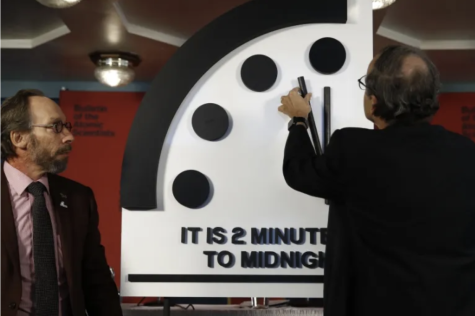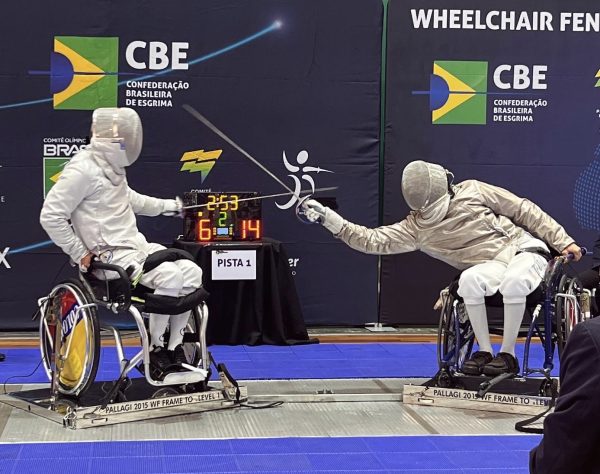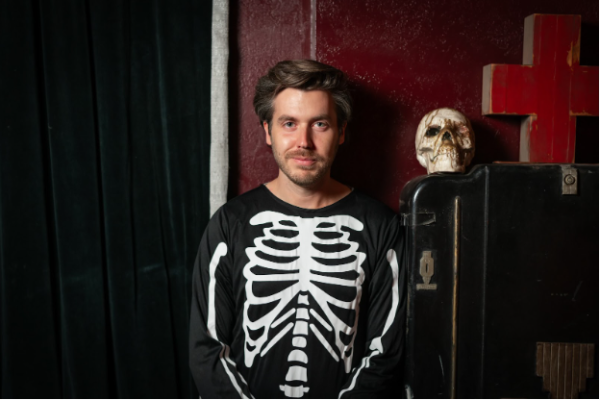90 seconds till the ultimate death: Doomsday clock update
Comparing predictions from the past to present of scientists warning the public about environmental issues.
Photo from https://thebulletin.org/2023/01/press-release-doomsday-clock-set-at-90-seconds-to-midnight/
We live in a world that is constantly surrounded by the frequent question of when the world will end. Throughout history, there have been many hypotheses to this question, namely the great change from 1999 to 2000. Many people were fearful that horrible destruction would fall upon midnight of December 31, 1999. This monumental event, also known as “Y2K” had people concerned about the computer’s ability to accurately capture time, transitioning from 1999 to 2000. Others worried if the world would soon shut down, considering our heavy dependency on technology. People were also worried about the closing of banks, hospitals, and other facilities. The federal government and authorities saw this as an urgent issue, comparing it to a natural disaster, concluding the event to be alarmingly crucial. Despite all these concerns, when the clock struck midnight, nothing happened, and citizens and technology were in fine condition.
Another event that wreaked havoc on society was the Mayan Calendar, which assumptively ended on December 21, 2012 and spiraled fear among all citizens of the earth. Many predicted that the world would face a major natural disaster such as an earthquake or tsunami, according to Mayan legends. However, this hypothesis was proven to be false, and nothing occurred on the predicted date. Previously, many scientists and public figures often voiced their opinions, claiming that it was the set last day of the world.
There’s a common pattern of authorities claiming a set date for the end of the world and convincing citizens to believe in it. To date, they’ve all ended up being proven false. However, the creation of the Doomsday Clock has created a unique case. It builds off of the theory created back in 1947 by Albert Einstein and other Nobel Prize winning atomic scientists. The scientists theorized the end of the world relative to the environmental disasters occuring around the world. The clock was originally founded as a way for scientists to alert the public of issues arising all over the world. What began as a string of announcements transitioned into a portrayal of the prediction on the world’s end.
Currently, the issues of nuclear wars and global climate change are major factors contributing to our assumed fate. “The Doomsday Clock is sounding an alarm for the whole of humanity. We are on the brink of a precipice,” explained Mary Robinson, former United Nations High Commissioner for Human Rights, “But our leaders are not acting at sufficient speed or scale to secure a peaceful and livable planet”
On Tuesday, January 24, 2023, the Bulletin of Atomic Scientists set the Doomsday Clock forward to 90 seconds from the end of the world, signaling the figurative prediction for the end of the world is a mere 90 seconds away. The 90 seconds is not a verbatim meaning of the estimated time, but rather a numerical way of symbolizing the approaching moment. There’s no confirmed way for atomic scientists to figure out a set date as people have done in the past, but they stand with their symbolic idea representing how global issues are pushing us closer. Their reasoning for the advancement is Russia’s invasion of Ukraine in February of 2022. The invasion triggered a war in European regions, and tensions recently grew after Russia’s President Vladimir Putin threatened to use nuclear weapons, proving to be stubborn in his refusal to surrender. As the United States, Russia, and China continue to modernize their arsenals, the Clock ticks forward.

Before in 2022, the clock was set to 100 seconds before midnight, which was an alarming evaluation as it was the first time that the clock was set in seconds instead of minutes. It is assumed that the world is “at doom’s doorstep,” announced a Bulletin scientist in 2022. The last time the clock was in minutes was during 2018. As more warnings of nuclear wars were coming on topic from 2017 to 2018, there was distress because of North Korea, Pakistan, and India’s progress of nuclear weapons. Fear rose as more countries got ahold of more dangerous weapons.
“It’s just as good as we have right now, I think we do need to be very aware of how serious it is that we can impact all life on earth in a catastrophic way… literally at a push of a button,” commented Mark Hanssen, an art teacher at Centennial High School.
Now to represent citizens of younger ages, it appears many students are not aware of what the Doomsday Clock even is. After being given background on the topic, Centennial students revealed a myriad of opinions on “Doomsday.” Most agreed that the world will end eventually. “This world is certainly degrading. [It’s] evidenced by this pandemic, anyways. [We’ll] surely fall to some uncontrolled nuclear war; something evolutionarily brought upon by ourselves.” stated an anonymous student.
The theory of the Doomsday Clock is interpreted differently by people. While many people see the concern presented by the clock, others argue that people do not need to be alarmed by the literal clock. “No, those guys don’t know what they’re talking about, frankly,” expressed Erik Siegwarth, a Centennial junior.
Similarly, many students reported that they do not fully trust the Doomsday Clock predictions.
Jamie Lee, a junior at Centennial explains, “I don’t think it’s such an accurate representation that we need to be constantly aware about it. Maybe it’s something we should consider because it’s some type of press telling us there is a representation but not an accurate representation that we don’t need to listen to”.
Furthermore, other opinions associate the Doomsday Clock to their personal life, or in this case, religion. “This concept…has a connection to religion… as a Muslim, our religion goes into the extreme detail of what doomsday would look [like],” states Arrshath Khan, a Centennial junior.
The concept of the time remaining, affected by the detrimental events around the world, stands as a metaphor, rather than the actual end of the world. “We are living in a time of unprecedented danger, and the Doomsday Clock time reflects that reality,” announced Dr. Rachel Bronson, the president of the Bulletin of the Atomic Scientists.
jy/rm/ac/ew
For more breaking news and photos, follow The Wingspan on Instagram and Twitter @CHSWingspan.





